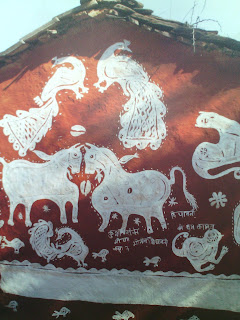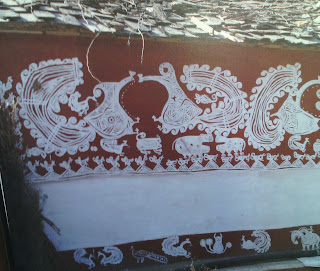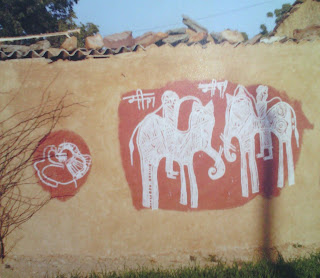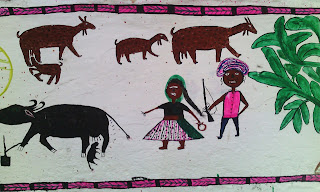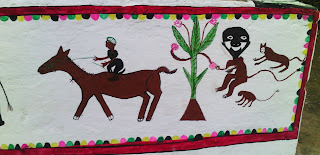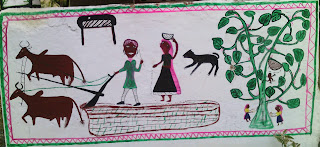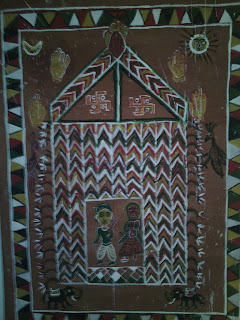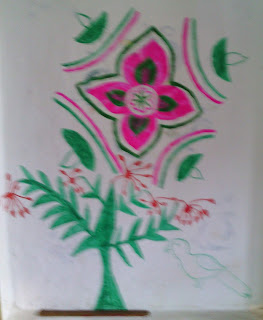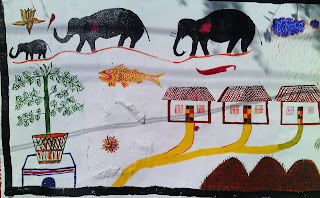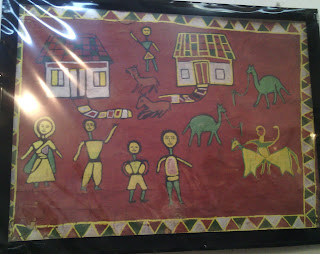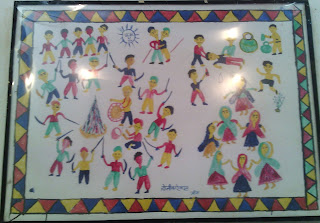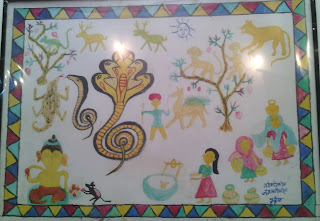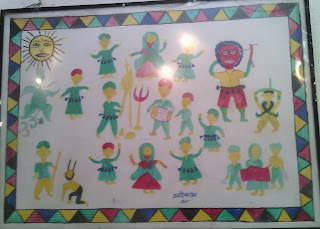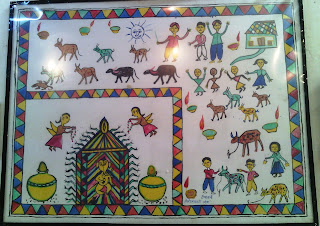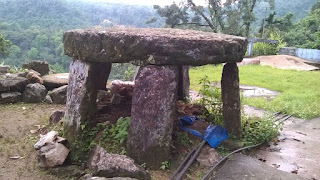Meena Art of Rajasthan
The
Minas also known as Meenas, are the largest Schedule Tribe of Rajasthan. They
are mainly concentrated in Jaipur, Alwar, Bharatpur, Sawai Madhopur, Tonk and
Bundi districts of Rajasthan. They trace their descent from Meenavatar, believed to be an
incarnation of Lord Vishnu in the form of a fish.
The
Minas also referred to as Ujla Minas and are subdivided into Zamindar Mina, who
are agriculturist, animal herdsman and Chowkidar Mina. The Chowkidar Minas did
not surrendered to Rajputs and kept in carrying out guerrilla warfare. The
Minas have traditional art form (graphic and drawing) by which wall of the
houses and floors are decorated. Peacock is the favourite of a Mina Artist.
Besides painting of gotrejes, they
also draw variety of deities. Paintings are mostly drawn by ladies.
The
Minas are expert in preparation of Mandanas.
It means kriya or sanja that is a decorative design with a
definite meaning or hypothesis. It is the regional folk painting of Rajasthan
and its adjacent states. However Mandanas
are acclaimed for its distinctiveness and beauty.
The
females of the Mina community decorate their walls and courtyards of the houses
with painting of a number of Mandanas
which are known under different appellation like Mandana of marriage, Mandana
of Govardhan Puja, Mandana of other
festivals and occasions and so on. However, drawing Mandana during Holi and Govardhan Puja is most important.
In
rural areas, females before drawing of Mandana,
prepare the base where they draw Mandana
or any form of drawing. The base is prepared by plastering the wall with
mixture of cow dung or yellow mud locally known as peeli mitti. Combination of both the material gives the colour of
Indian red. Sometimes two or three times plastering is being made to give the
base of painting elegant look. After plastering, no painting is done for one or
two days to allow the place completely dry up. The painting is done with index
finger and thumb. Some females use twig of date palm as painting brush. In such
case, front part of the twig is crushed with the help of stone or brick. In
some other occasions, it is also observed that females wrap the index finger
and thumb with a thin piece of cloth while they are engaged in painting.
For
painting, white and Indian red colour are used. White colour is obtained from
locally available lime or white clay while Indian red colour is prepared from
mixing cow dung and yellow mud. To make distinctive contrast at the time of
preparing painting with Indian red colour, the base is prepared by plastering
the area with white clay or lime. In urban areas, Mina females sometimes draw
paintings by using chemical colour especially acrylic or oil colours.
It
is believed that drawing during auspicious occasions like marriage keeping the
house without painting of Mandana is
a sign of bad omen which led to misfortune. They paint number of animals,
plants etc. In the Mina village more than one hundred fifty variety of peacock
can be seen. Besides animals, birds etc., some geomorphic and anthropomorphic
designs can also be noticed in their creative work. Dots and circles are
frequently observed in their drawings.
Besides
painting, a very few Mina houses and grain containers are provided with relief
work or relief Mandana. In relief
work, abstract and symbolic designs are seen. Apart from it anthropomorphic,
zoomorphic, geomorphic and geometric designs can also be envisaged.
